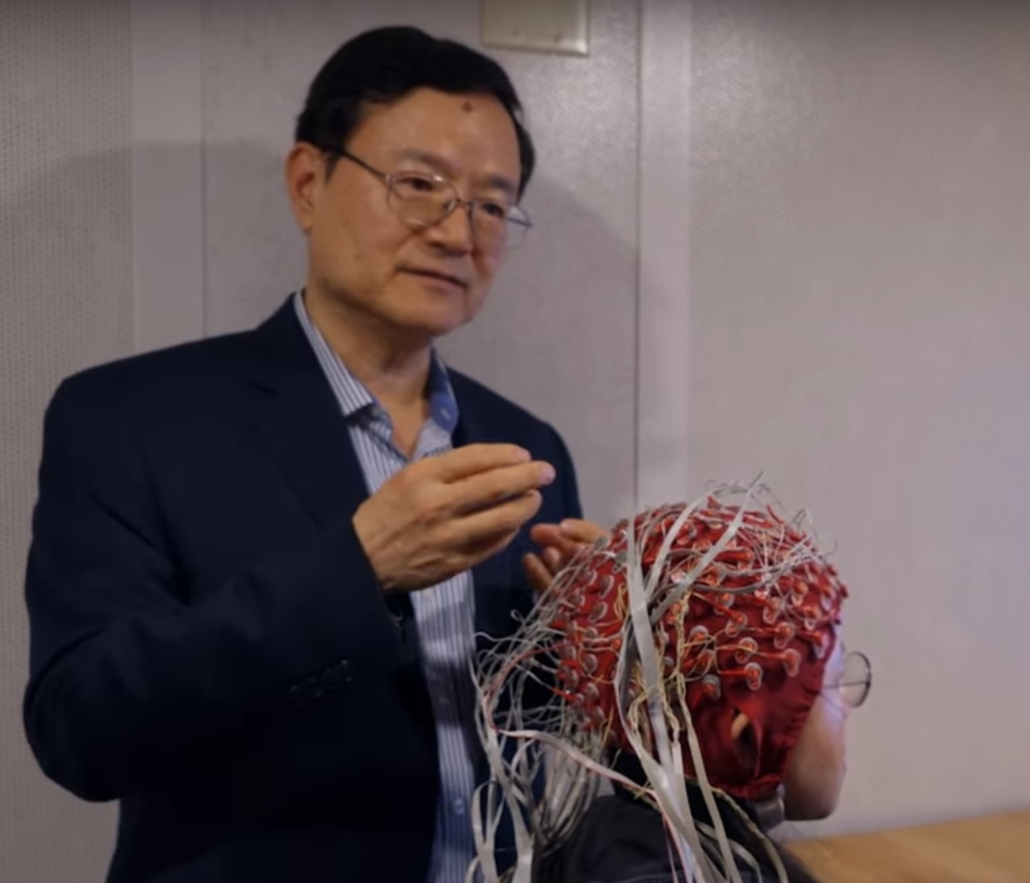EEG-powered brain computer interface enables finger-level robotic hand control
Carnegie Mellon University scientists have demonstrated the first noninvasive brain-computer interface capable of controlling individual robotic fingers in real-time using electroencephalography (EEG) signals. The breakthrough study, involving 21 participants, achieved 80.56% accuracy for two-finger control tasks and represents a significant advance in dexterous robotic manipulation through thought alone.
.
The research, published in Nature Communications on 30 June 2025, overcomes long-standing challenges in noninvasive brain-computer interface (BCI) technology by successfully decoding individual finger movement intentions from scalp-recorded brain signals. Previous noninvasive systems were limited to controlling large muscle groups or required unintuitive mappings between user intentions and robotic commands.

Professor Bin He from Carnegie Mellon University’s Department of Biomedical Engineering, who led the research, stands with the subject during the research.
Revolutionary approach to finger-level control
Professor Bin He from Carnegie Mellon University’s Department of Biomedical Engineering, who led the research, explained the significance of this achievement: “Improving hand function is a top priority for both impaired and able-bodied individuals, as even small gains can meaningfully enhance ability and quality of life. However, real-time decoding of dexterous individual finger movements using noninvasive brain signals has remained an elusive goal, largely due to the limited spatial resolution of EEG.”
The research team employed a sophisticated deep learning approach using EEGNet, a convolutional neural network specifically designed for EEG-based BCI applications. The system utilised both movement execution and motor imagery paradigms, allowing participants to control robotic fingers either by physically moving their own fingers or simply by imagining the movements.
Watch brief video of Professor Bin He explaining the research
Technical innovations overcome spatial limitations
The fundamental challenge in finger-level EEG decoding lies in the overlapping brain activity patterns generated by individual fingers. The authors noted that “finger movements within the same hand activate relatively small and highly overlapping regions within the sensorimotor cortex, complicating the differentiation between them from noninvasive recordings.”
To address this limitation, the researchers implemented a novel fine-tuning mechanism that continuously adapted the decoding model to each participant’s specific brain patterns. This approach significantly enhanced performance, with fine-tuned models consistently outperforming base models across all experimental conditions.
The study demonstrated that the alpha frequency band (8-13 Hz) provided the most discriminative information for finger movement classification, while broadband EEG signals (4-40 Hz) yielded superior performance compared to single frequency bands.
Clinical implications and performance metrics
Twenty-one able-bodied participants with previous BCI experience completed the study, achieving remarkable accuracy levels in real-time robotic control tasks. For two-finger control involving thumb and pinky movements, participants achieved an average accuracy of 80.56% using motor imagery and 81.10% using actual movement execution. Three-finger control tasks, incorporating thumb, index finger, and pinky movements, yielded accuracies of 60.61% and 60.11% respectively.
The research revealed that minimal training was required for effective control. As the authors observed: “One session of online training was sufficient for the EEGNet models to extract distinguishable features from scalp EEG signals, performing comparably to later training sessions.”
Addressing control stability challenges
To enhance the practical utility of the system, researchers developed an innovative online smoothing approach that reduced output fluctuations while maintaining classification accuracy. This technique significantly improved control stability by incorporating historical decoding information into real-time decisions, resulting in smoother robotic movements and enhanced user experience.
Analysis of brain activity patterns confirmed that the system primarily relied on the contralateral sensorimotor cortex, consistent with established neurophysiological understanding of motor control. However, the researchers found that whole-scalp coverage provided superior performance compared to motor-region-only signals, suggesting the importance of distributed neural processing in finger movement decoding.
Future directions and limitations
While the current study focused on experienced BCI users, the researchers acknowledged important limitations. “All participants had varying degrees of prior exposure to limb-level BCI experiments before taking part in this study, which need to be considered when interpreting the current findings,” the authors noted.
The research team also highlighted that four-finger classification yielded insufficient accuracy for practical applications, achieving only 46.22% accuracy for motor imagery tasks. This limitation reflects the substantial overlap in neural responses associated with neighbouring fingers, particularly the index and middle fingers.
Looking ahead, the authors suggested several promising directions for enhancement: “Future research incorporating strategies such as EEG source imaging, advanced signal processing techniques, and integration with other neuroimaging modalities could lead to more precise mapping of brain activity, thereby enhancing the accuracy and reliability of BCI systems.”
He emphasised the broader implications: “The insights gained from this study hold immense potential to elevate the clinical relevance of noninvasive BCIs and enable applications across a broader population. Our study highlights the transformative potential of EEG-based BCIs and their application beyond basic communication to intricate motor control.”
This breakthrough represents a critical step towards developing practical, noninvasive BCI systems for individuals with motor impairments, while also opening new possibilities for human-robot interaction in various applications.
Reference
Ding, Y., Udompanyawit, C., Zhang, Y., & He, B. (2025). EEG-based brain-computer interface enables real-time robotic hand control at individual finger level. Nature Communications, 16, 5401. https://doi.org/10.1038/s41467-025-61064-x

